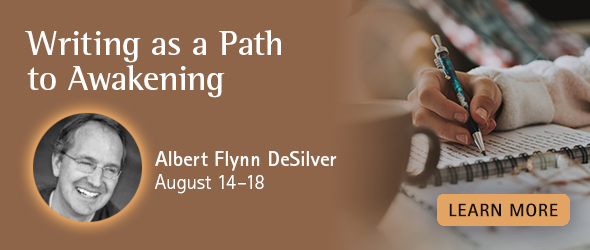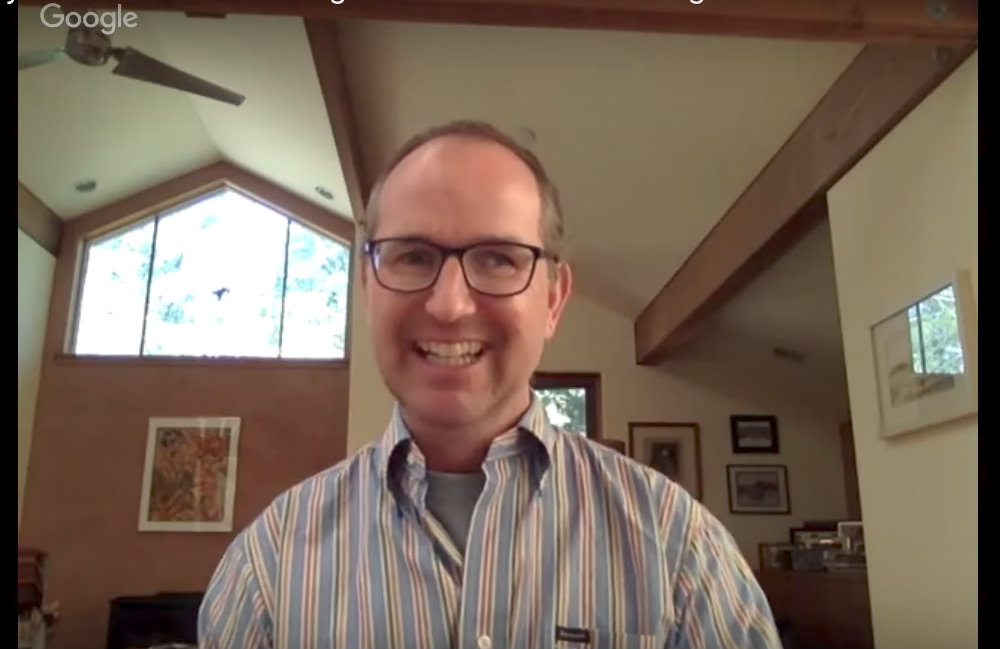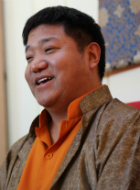Writing as a Path to Awakening
By Albert Flynn DeSilver //
Writing as a Path to Awakening begins with a primal human question; who am I? Who am I, really? I can not tell what I am, because words can describe only what I am not, said the great Indian mystic Nisargadatta Maharaj.
We set off writing on the path to awakening by tuning into what we are not. If we are not what words can describe, and words can describe pretty much everything, then what the heck are we? This is Writing as a Path to Awakening’s ultimate question, with the invitation to write and live your way into the answer.
Writing as a Path to Awakening is about how conscious living informs conscious writing (conscious creativity) and in turn, how conscious writing and creativity inform conscious living. It’s one infinite loop, the helix of return. The practice of writing is an exploration of consciousness, a practice toward deeper self-awareness, and moves us along the path of awakening to our true nature. Many of our greatest spiritual teachers from around the world were, and are, writers. From Sappho in the 7th century BC, to Pema Chödrön—from Rumi in the 13th century, to Thomas Merton, Jack Kornfield, and the Dalai Lama—the written word has the power, not only to inspire, but also to awaken the very best in the human heart.
Writing as a Path to Awakening begs the question; awakening to what? Awakening means waking up from the dream of separation. It means waking up from the dream of identifying with our stories, our thoughts, opinions and beliefs, and in turn by our knee-jerk emotional responses to those thoughts, opinions and beliefs that surround them. Some of these habitual emotional responses come from long established patterns of conditioning, hurt, and trauma that have accumulated within us throughout the course of our lives.
Writing as a Path to Awakening asks us to turn our attention inward toward the wisdom of a poetically open heart and mind, and away from an exclusive entanglement with the clutches of external physicality. It asks us to take time and gain perspective by watching the play of thought, by witnessing the mind in action doing it’s thing and practicing not reacting, not responding, because here you are innocently sitting with your eyes closed breathing into your body with a commitment to patience, peace, insight, and letting go.
Writing is one of the most powerful points of focus we have as human beings. Writing is an act of creation, as speaking is an act of creation. It’s the impulse; the catalyst that takes an idea from the mind, from thought and launches it on its journey into physical reality on the page. Writing is transformational; it has the power to transmit amorphous impulses of thought into concrete ideas through empty space. As Stephen King would say; “Writing is telepathy.” Pure and simple. A specific detailed image I have in my head can be set in words, written down, printed on paper, in books and read by someone thousands of miles away, and they can see that image in their own mind’s eye thereby experiencing the emotional intent of it. Now that’s magic.
Writing is an act of magic, a catalyst for manifestation. Now of course not all words are created equal—not all sentences, not all paragraph or stories. Some are imbued with more catalytic power, more transformational clout than others. Very few of us are born with the gift of being able to string along words symphonically with apparent ease. Most of us must practice the craft, study the greats, repeatedly hash it out on the page, read and re-read, fail and re-fail, play and play on, then practice some more. Practice in writing doesn’t make perfect. Practice makes process. And if you can get yourself to practice enough, to the point of creating and then engaging in a consistent process, it will turn into a habit, a routine, and then you are on your way to proficiency and eventual success.
Writing and sitting meditation practice are a powerful pair, a dynamic duo; think Thelma and Louise, Batman and Robin, Lewis and Clark, Lavern and Shirley, even Tom and Jerry—together they nourish and push, trigger and define, inform and inspire, enable and energize. To engage in both practices fully is to activate a more complete, creative and spiritual self. The invitation is here and now, take time to breathe in silence, and surrender to your innate creative genius! Then go forth, wake up, and write!
About the Author

Featured image by Beowulf Sheehan






